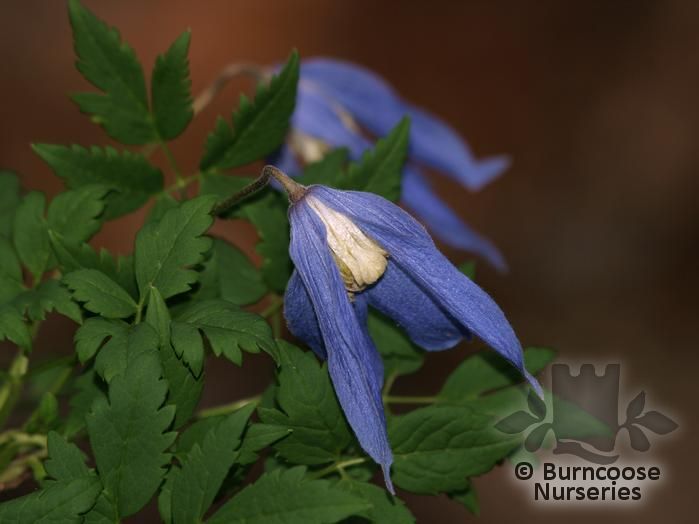CLEMATIS alpina 'Blue Dancer'

<





>
CLEMATIS alpina 'Blue Dancer'
Commonly known as Alpine clematis, Virgin's bower
A very popular pale blue early flowering clematis.
Full Plant Details - Sun/Soil & other attributes
-
Floweringlocal_floristJanlocal_floristFeblocal_floristMarlocal_floristAprlocal_floristMaylocal_floristJunlocal_floristJullocal_floristAuglocal_floristSeplocal_floristOctlocal_floristNovlocal_floristDec
-
 Good to know
C. alpina varieties tolerate cold, exposed sites. Prune after flowering to allotted space to encourage growth for next season's flowers.
Good to know
C. alpina varieties tolerate cold, exposed sites. Prune after flowering to allotted space to encourage growth for next season's flowers. -
 Pests & Diseases
Cutworms, aphids on young plants, clematis wilt.
Pests & Diseases
Cutworms, aphids on young plants, clematis wilt. -
 Place of origin
Europe.
Place of origin
Europe. -
DeciduousPale to mid-green leaves 3-5cm (1¼-2in) long with 3-5 lance-shaped to broadly oblong, toothed leaflets.
-
 Blue
Pale blue
Blue
Pale blue -
Bell/LanternOpen bell-shaped with 4 narrow, twisted sepals 5-7cm (2-3in) long
-
Cottage garden
-
Suitable for small gardens
-
Town garden
-
Fully hardy
-
 Incised
Incised
-
 Height
2-3m (6½-10ft)
Height
2-3m (6½-10ft) -
 Spread
1m (39in)
Spread
1m (39in) -
ClimberSome of these climbing plants will need trellis or wire supports if grown on walls or fences. Other grow aerial roots and are self-clingingEarly-flowering climber. Produces flowers on previous year's shoots and sometimes on new growth in summer. Fluffy seed heads in late summer.
-
 Hardy - very cold winter
Hardy in all of UK and northern Europe. Plant can possibly withstand temperatures down to -20°C (-4°F)
Hardy - very cold winter
Hardy in all of UK and northern Europe. Plant can possibly withstand temperatures down to -20°C (-4°F) -
Autumn Seasonal Interest
-
Spring Seasonal Interest
-
Fertile well drained soilHumus-rich. Mulch in late winter.
-
 Full sun
Provide shade for roots and base.
Full sun
Provide shade for roots and base. -
 Partial shade
Partial shade
-
 harmful if eaten
Pets, i.e. cats, dogs, rabbits, rodents, notably rabbits
harmful if eaten
Pets, i.e. cats, dogs, rabbits, rodents, notably rabbits -
 skin irritant
People
skin irritant
People -
Rabbit Resistant
View Planting Tips and Care Advice
Clematis - Growing Guide
Planting to avoid allergic reactions and asthma
View Customers Also Bought
View Planting Combinations









